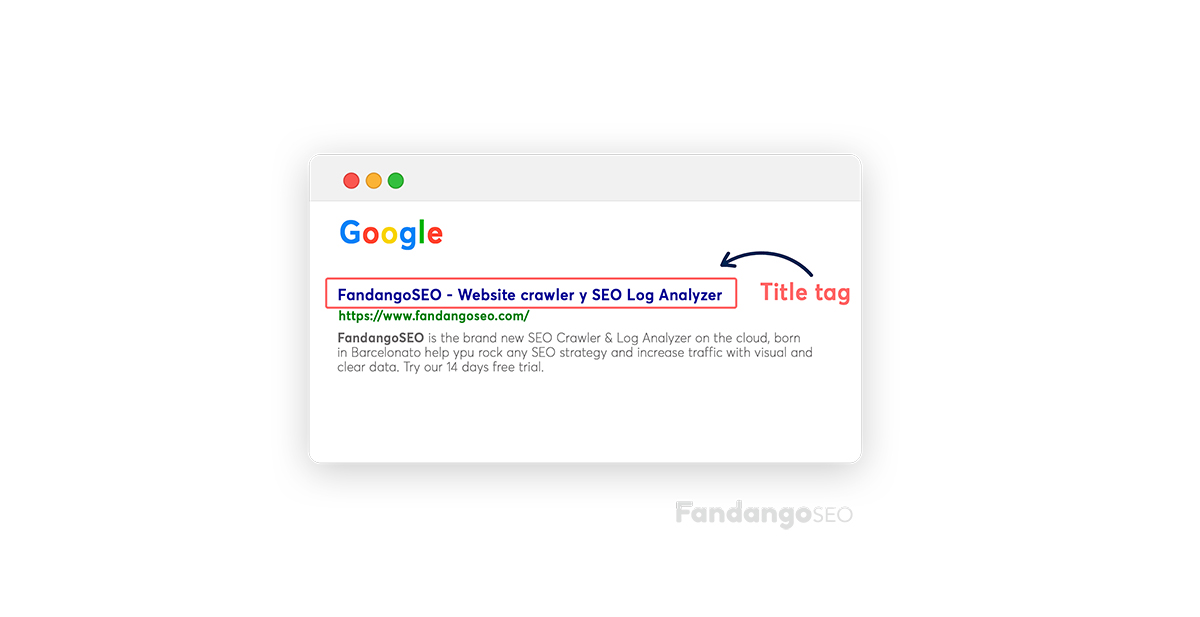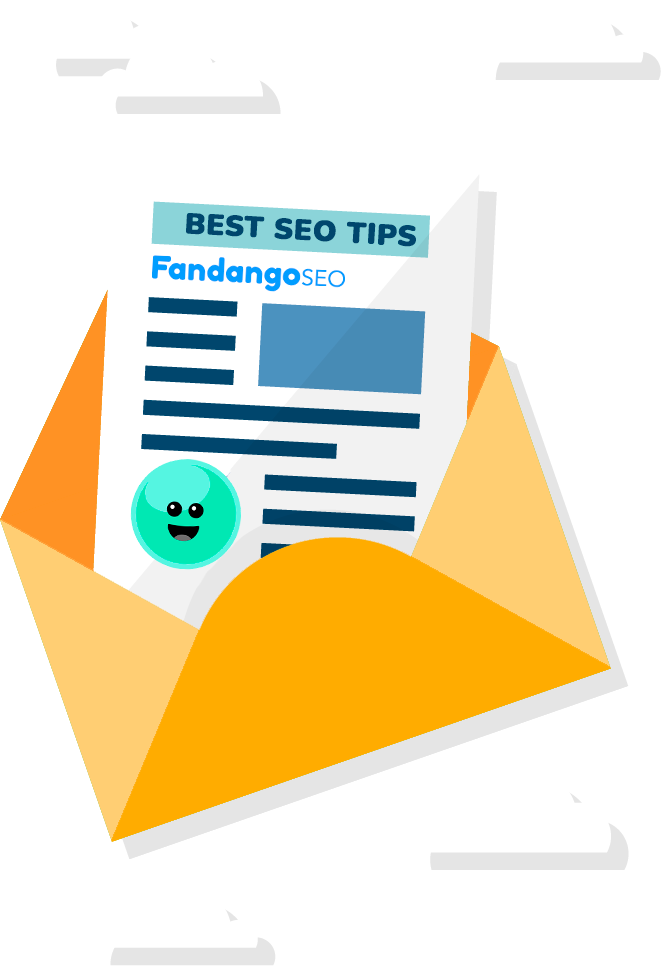First impressions count, or at least they help to catch someone’s attention. If we take an interest in a book’s cover, we’ll probably turn it over to read the synopsis. 😉
Likewise, users and search engines need a good description of what’s on a page- a short, concise, and descriptive title. So how can we have the most optimized meta titles on our pages?
What is a title tag?
A title tag is a short sentence placed in the HTML header to indicate to search engines and users the name of a page. It has to be catchy, descriptive, consistent with the content that’s displayed, and really well optimized, as it’s the first element you see on a page.
Why are title tags important?
Titles are one of the key elements to rank higher on search engines. They appear at the top of the snippet on the SERPs (Search Engine Results Pages), like the following example:

As you can see, they are pretty visible. In fact, they’re the first thing you see in the result.
They can also be found when we place the mouse on a tab in any browser.
Titles also appear on social media channels when a visitor shares the URL on their wall. Try to optimize them with Open Graph or Twitter Cards.
Alright, now we know they are the first thing one sees on the SERPs. This will consequently drive traffic to a website, and that’s why they’re so important in the first place.
Secondly, note that Google and other search engines really look at the keywords in a title tag in order to determine a page’s position on the SERPs. Therefore they have to be related to the page’s content. It’s also vital to use keywords with the highest search volume for titles, as this will affect how potential visitor finds what they are looking for.
What are page meta tags?
This being said, to fully understand the title tags, it is worth knowing the meta tags. Why do we call them “meta titles”? A meta is a tag that we add on the <head> of the page’s HTML to describe its content to search engines. Inside this header, we will type in the title, description, and other information that is useful for the Google bot to understand what the page is about.
There are many types of meta tags, apart from the title, such as meta descriptions, robots, canonicals, social meta tags, etc. These appear framed inside a code.
Let’s see an HTML code example that includes a title tag:
<head>
<title>Apple and Android Smartphones - buy & sell | PhonesBarcelona</title>
<meta name="description" content="Buy and Sell the latest Smartphones: iPhone 7, 8 and X, Samsung Galaxy S8, Xiaomi mi A1 and many more. Safe transactions, Best prices, FREE shipping!" />
</head>
Simple, right? Now, you’ll learn how to make the most out of your meta titles.
What’s the best title tag length?
Keeping in mind the length of meta titles is very important because Google usually displays the first 50 to 60 characters, so the best option is to keep them below 60 to have 90% of them showing up correctly. If they’re longer, there’s a chance they will be cut off.
Actually, the best way to estimate if a title will be fully featured on a snippet is to look at the width. Currently, titles allow up to 600 pixels. This is a better parameter for you to create a page title, and be sure you won’t have to redo them once they’re indexed!
Why is pixel width more reliable for measuring the meta title length? Easy: an “i” takes up less space than a “w”, so you see why counting characters can be deceiving. 😀
How to write meta title tags for SEO
Here’s a list of the first elements an SEO specialist will optimize on a website – content-wise. Let’s look at some tips to create the best meta titles:
- Start with complete keyword research to determine the most important and descriptive words for each of the pages on your website.
- Yes, you read that correctly. Every single page on a site must have one title tag and only one. Otherwise, search engines won’t even look at it because it can’t be listed on the SERPs.
- It’s sometimes hard to create titles for all of them, but you can automatize them (with an SEO check). But be careful not to duplicate titles! This is terrible for SEO.
- You’ll have to make sure the titles are engaging and relevant while including the top keywords at the same time. Sounds challenging, but you’ll get the hang of it.
- Include a CTA (Call To Action) if you have enough space. These will be actions such as buy, sign up, sell, etc.
- Mention the brand name at the end, especially if it’s a well-known brand. You’ll want to write it at the beginning of the home or the about us page because the content is more branded.
- Add the country if your site is regional. You will already display the correct webpage on every country thanks to the hreflang meta tag, but adding the location is sometimes a cool option for users.
- Make your header (h1) different from the title tag.
- And please, avoid keyword stuffing! (Adding too many repetitive keywords without making any sense to a human).
Last but not least, here’s an example of a perfect title tag structure you should follow:
Primary keyword – secondary keyword | Brand name
Remember that you’re addressing your page to a person, not just talking to a robot, so try to sound natural and like a human. A title tag is the first interaction your site has with a new visitor, so it’s important to keep in mind user experience and relevancy at this first step.
If you want to know the status of your titles: whether they’re too long, duplicated, or missing, you can run a crawl with FandangoSEO and monitor the titles’ optimization. Also, check our blog post on how to optimize your title tags for SEO to learn to perform an in-depth audit.
Headings Meta Description